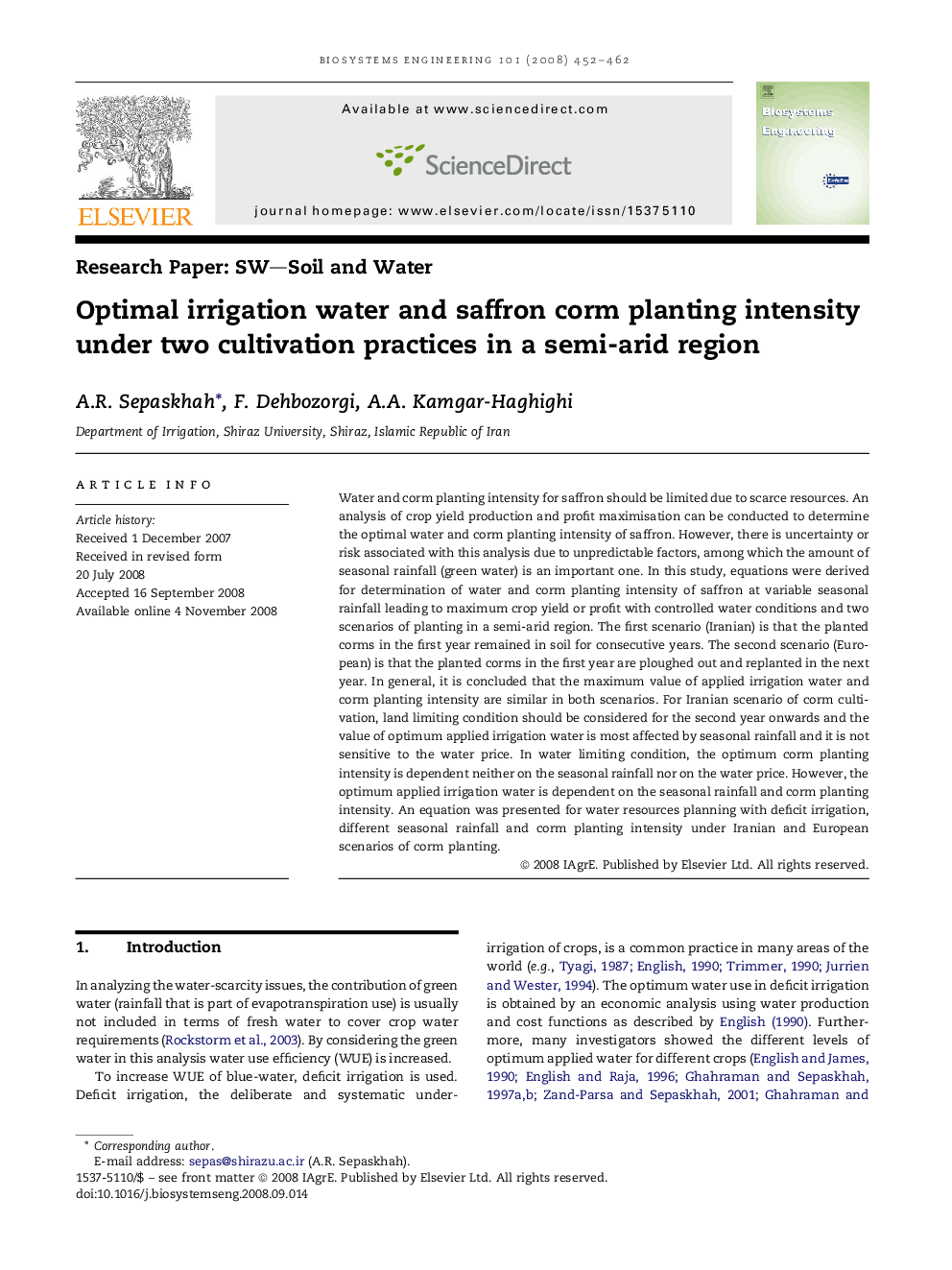| Article ID | Journal | Published Year | Pages | File Type |
|---|---|---|---|---|
| 1712261 | Biosystems Engineering | 2008 | 11 Pages |
Water and corm planting intensity for saffron should be limited due to scarce resources. An analysis of crop yield production and profit maximisation can be conducted to determine the optimal water and corm planting intensity of saffron. However, there is uncertainty or risk associated with this analysis due to unpredictable factors, among which the amount of seasonal rainfall (green water) is an important one. In this study, equations were derived for determination of water and corm planting intensity of saffron at variable seasonal rainfall leading to maximum crop yield or profit with controlled water conditions and two scenarios of planting in a semi-arid region. The first scenario (Iranian) is that the planted corms in the first year remained in soil for consecutive years. The second scenario (European) is that the planted corms in the first year are ploughed out and replanted in the next year. In general, it is concluded that the maximum value of applied irrigation water and corm planting intensity are similar in both scenarios. For Iranian scenario of corm cultivation, land limiting condition should be considered for the second year onwards and the value of optimum applied irrigation water is most affected by seasonal rainfall and it is not sensitive to the water price. In water limiting condition, the optimum corm planting intensity is dependent neither on the seasonal rainfall nor on the water price. However, the optimum applied irrigation water is dependent on the seasonal rainfall and corm planting intensity. An equation was presented for water resources planning with deficit irrigation, different seasonal rainfall and corm planting intensity under Iranian and European scenarios of corm planting.
